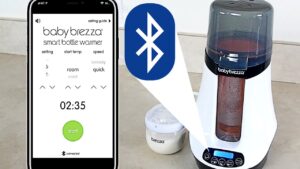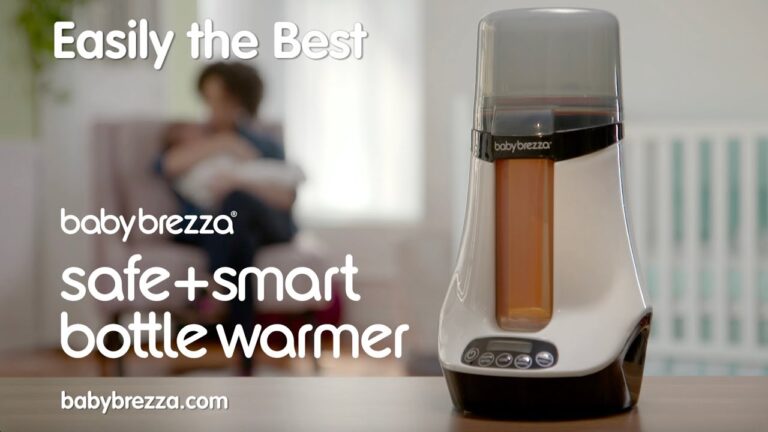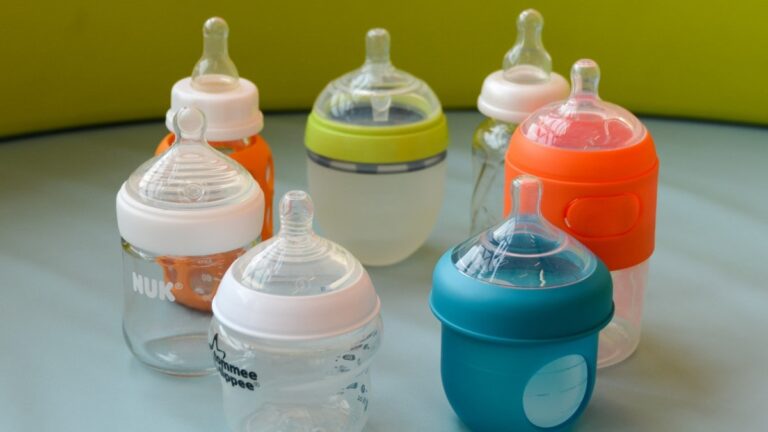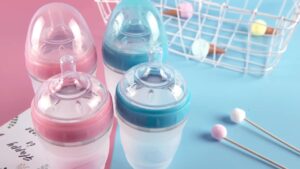Introduction
Parenting comes with its fair share of challenges, and feeding your baby is one of the most critical aspects. The Baby Brezza Bottle Warmer has become a trusted companion for many parents, offering convenience and reliability. If you’re new to this device or want to optimize its use, this guide will provide all the insights you need.
1. What is a Baby Brezza Bottle Warmer?
The Baby Brezza Bottle Warmer is a high-tech device designed to warm baby bottles, breast milk, and formula safely and efficiently. Its innovative features ensure the milk reaches the ideal temperature without losing nutrients, making feeding time easier for parents and comfortable for babies.
2. Why Choose the Baby Brezza Bottle Warmer?
The Baby Brezza Bottle Warmer stands out for its simplicity, speed, and precision. Here’s why many parents prefer it:
- Ease of Use: The device features intuitive controls that make warming bottles hassle-free.
- Versatility: It can heat bottles of varying sizes, as well as glass or plastic containers.
- Nutrient Preservation: Its “Steady Warm” mode ensures breast milk is warmed evenly without compromising its nutrients.
- Time-Saving: Faster than traditional water baths or microwaves, it’s ideal for busy parents.
3. Features of the Baby Brezza Bottle Warmer
To understand why this device is worth the investment, let’s explore its key features:
- Dual Warming Modes:
- Steady Warm: Uses a warm water bath to preserve nutrients in breast milk.
- Quick Warm: Employs steam for faster heating, suitable for formula or baby food.
- Digital Display:
The clear, easy-to-read display simplifies operation. - Compatibility:
Works with most bottle brands and sizes. - Bluetooth Connectivity:
With the Baby Brezza app, you can control the device remotely and receive alerts when warming is complete.
4. Step-by-Step Instructions on Using the Baby Brezza Bottle Warmer
Setting Up the Device
- Unbox the Baby Brezza Bottle Warmer and remove all packaging materials.
- Place the warmer on a flat, dry surface near an electrical outlet.
- Fill the water reservoir according to the instructions in the user manual. Ensure the water level is adequate but not overfilled.
Selecting the Mode
- Plug in the device and power it on using the button.
- Use the control panel to select either Steady Warm or Quick Warm based on your needs.
Heating Milk or Formula
- Place the baby bottle or container in the warming chamber.
- Adjust the settings for bottle size, content type (breast milk or formula), and preferred warming mode.
- Press start and wait for the warming cycle to complete.
- Once done, remove the bottle carefully and shake it to ensure even temperature distribution.
5. Safety Tips for Using a Bottle Warmer
- Avoid Overheating: Always check the milk’s temperature before feeding to prevent burns.
- Follow Manufacturer Instructions: Misuse can damage the device or lead to unsafe warming.
- Clean Regularly: Prevent bacteria buildup by cleaning the device after every use.
- Use Compatible Bottles: Ensure your bottles are compatible with the warmer to avoid leaks or improper heating.

6. How to Clean Your Baby Brezza Bottle Warmer
Cleaning your Baby Brezza Bottle Warmer is crucial for hygiene and performance. Here’s how:
- Daily Cleaning:
- Unplug the device and let it cool down.
- Empty the water reservoir and wipe the chamber with a soft cloth.
- Deep Cleaning (Weekly):
- Use a mixture of equal parts vinegar and water to descale the reservoir.
- Run a warming cycle without a bottle to remove mineral deposits.
- Rinse thoroughly and wipe dry.
- Avoid Abrasive Materials:
Stick to non-abrasive sponges or cloths to prevent scratching the surfaces.
7. Common Issues and Troubleshooting
- The Warmer Doesn’t Start:
Ensure it’s properly plugged in and that the water reservoir isn’t empty. - Uneven Heating:
Check if the bottle is positioned correctly in the chamber. - Water Leakage:
Avoid overfilling the reservoir and ensure all components are securely in place.
8. Benefits of Using a Baby Bottle Warmer
Still wondering if you need a bottle warmer? Here are the advantages:
- Convenience: Eliminates guesswork in achieving the right temperature.
- Nutrient Retention: Especially critical for breast milk.
- Time Efficiency: Warm bottles in minutes, ideal for midnight feeds.
- Safety: No risk of hot spots often caused by microwaves.
9. Alternatives to the Baby Brezza Bottle Warmer
While the Baby Brezza is excellent, you might also consider:
- Philips Avent Fast Bottle Warmer
- Dr. Brown’s Deluxe Bottle Warmer
- Tommee Tippee Closer to Nature Warmer
Each of these offers unique features but may lack some of Baby Brezza’s advanced functionalities.
10. FAQs About Baby Bottle Warmers
1. Can I warm baby food jars in the Baby Brezza Bottle Warmer?
Yes, the warmer accommodates baby food jars as well as bottles.
2. How long does the warming process take?
The duration depends on the mode and bottle size but typically ranges from 3-10 minutes.
3. Is it safe to leave the warmer plugged in?
While it’s safe, unplugging the device when not in use is recommended for energy conservation.
4. How often should I describe the warmer?
Descaling is recommended every 1-2 weeks, especially if you use hard water.
5. Can I use distilled water in the reservoir?
Yes, using distilled water helps prevent mineral buildup and extends the device’s lifespan.



